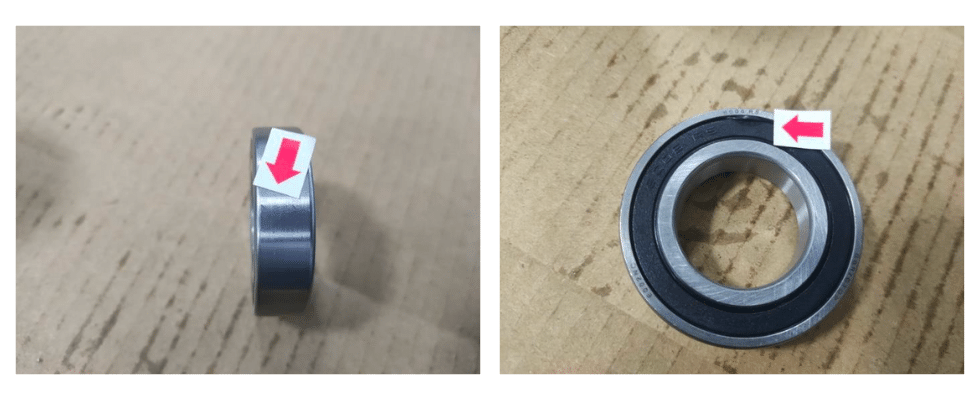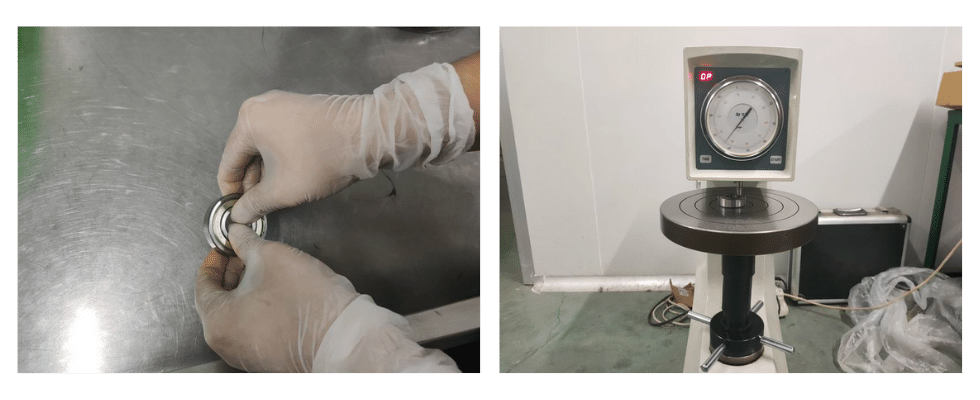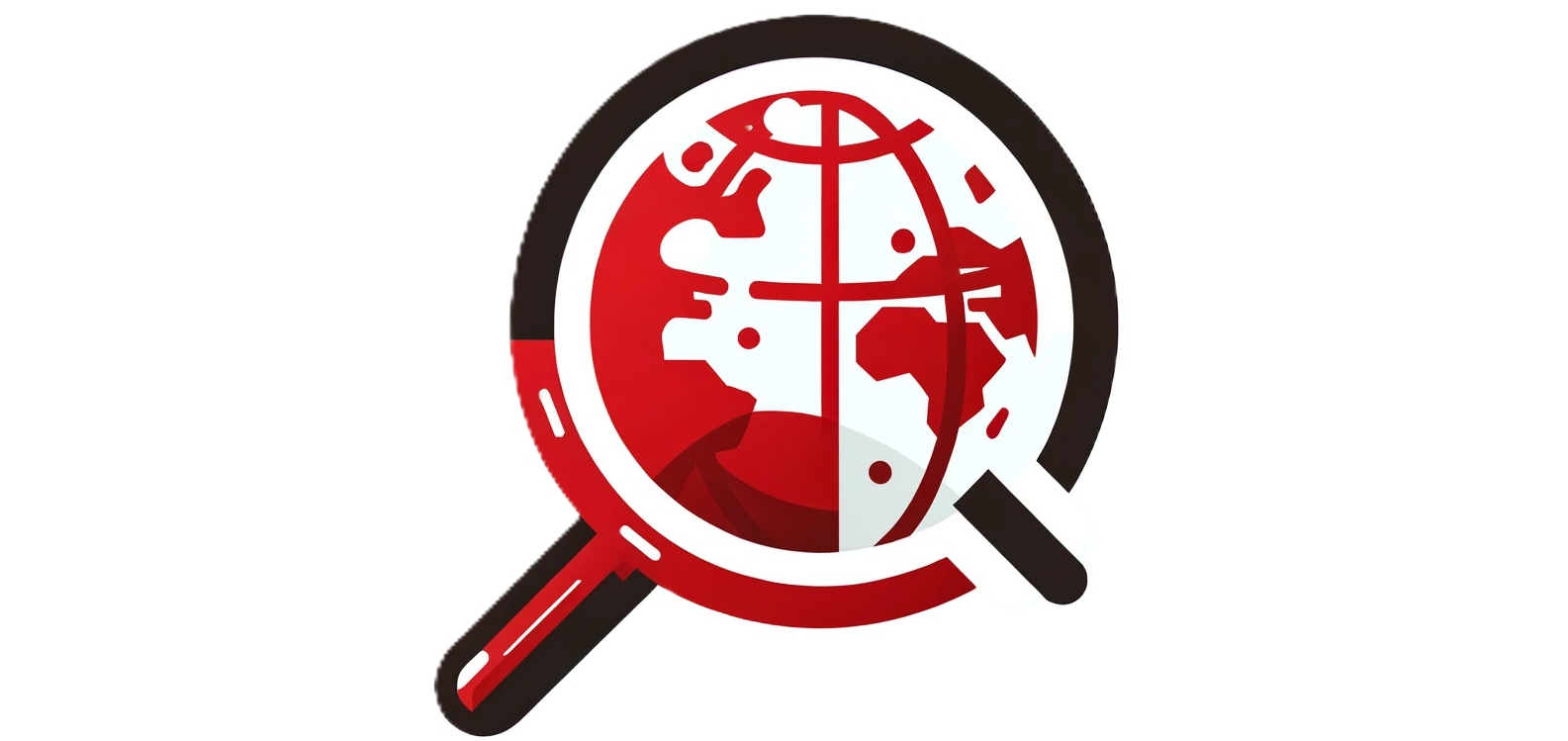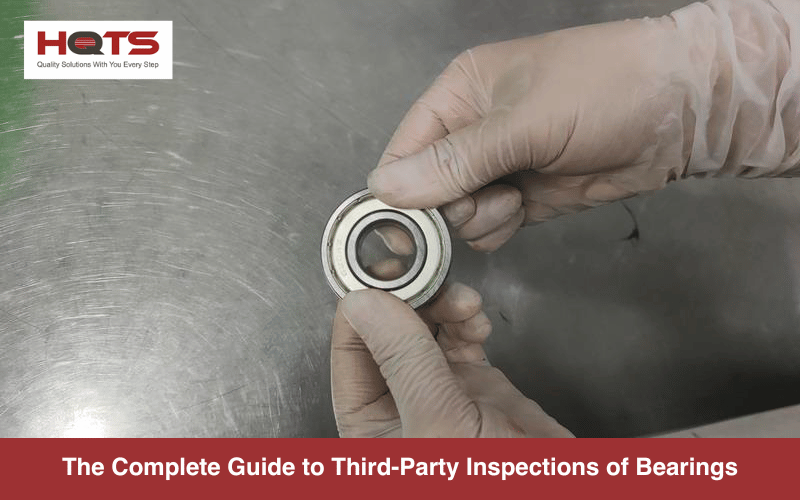Bearings, fundamental components in industrial machinery, play a crucial role in reducing friction and supporting rotational or reciprocating motion and is used in many industries.
Similar to other industrial parts, it’s important that the bearings have a high level of quality and conform to established tolerance limits. Any deviation, such as a slight variation in dimensions or material hardness, could jeopardise their efficiency and overall functionality. This is where third-party inspections of bearings become vital.
In this article, we will explore the key parameters that third-party inspectors consider during pre-shipment inspections of bearings.
Bearings Quality Control: Main Challenges
Bearings are widely used in numerous mechanical and industrial applications such as in automotive, electronic equipment, mechanical tools, and aerospace industries.
The selection of bearings is often contingent upon the specific needs of the application, including the nature and size of the load, the operational speed, and the environment in which they will be used. Properly selecting and maintaining bearings can prolong equipment lifespan and decrease costs associated with repairs and replacements – which highlights the important role of quality control.
When procuring bearings from suppliers, you may encounter a variety of quality control challenges. From our experience, we frequently discover the following quality defects on bearings:
- Incorrect Dimensions – Inconsistencies such as incorrect inner or outer diameter, width, or other dimensions that deviate from your specifications.
- Surface Defects – Key quality defects like rust, scratches, dents, or other surface deformations that can adversely impact the bearing’s performance and longevity.
- Inadequate Hardness – Incorrect hardness to withstand the loads and speeds they are rated for. The bearing may deform under load if the hardness is too low due to incorrect heat treatment.
- Poor Assembly – Assembly issues like misaligned elements, incorrect sequencing, missing parts, or improper fitting of bearing elements.
- Incorrect Quantity – Your supplier might ship quantities smaller than ordered due to miscommunication, inventory errors, or production capacity issues.
Third-Party Bearing Inspections: General Checklist
While the quality inspection criteria can vary based on the timing, requirements, and bearing type (such as ball bearings, roller bearings, plain bearings, or angular contact ball bearings), here is a brief bearings inspection checklist at a factory:

1. Quantity Verification
The inspector will verify the quantity to ensure alignment with your purchase order. In certain instances, our inspectors may experience challenges to perform this task de to potential mix-ups in item packages and incomplete readiness of all pallets/cartons at the time of inspection. Any such occurrences will always be detailed in the inspection report.

2. Assessment of Workmanship
This phase encompasses a visual inspection to detect any surface defects, evaluating the overall workmanship of the bearing. In the case below, you can see that the inspector noticed a slight scratch mark on the inspected product.

3. Verification of Style, Color & Documentation
Inspectors cross-check that the inspected bearings align with the product specification. In addition, the inspector will verify adherence to the specified design, cross-check material test reports, performance tests, and other related documentation.
4. Field Test & Measurement
This crucial stage ensures that dimensions comply with equipment and application requirements. Tests include weight checks on cartons, verification of outer, inner, and inside ring dimensions, and bearing hardness checks.

Conclusion: Third-Party Inspection on Bearings
Given their wide applicability and stringent industry and quality standards, using quality inspections is a cost-effective method to verify whether your bearings will adhere to your requirements.
In this article, we outline some of the key focus points on bearing inspections, which included: quantity verification, workmanship assessment, documentation validation, and field testing and measurements. It’s important to note that this is just an example of checkpoints and that it may differ depending on the client’s requirement.
With years of expertise in performing quality control checks on bearings, AQM BD stands as your impartial third-party agency. We can inspect your bearing manufacturer globally to verify that your products meet your stringent quality standards. Contact us today to learn more about our industrial goods inspection services.





